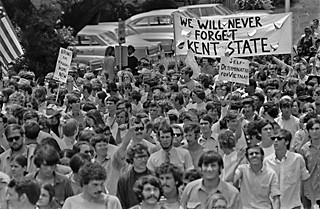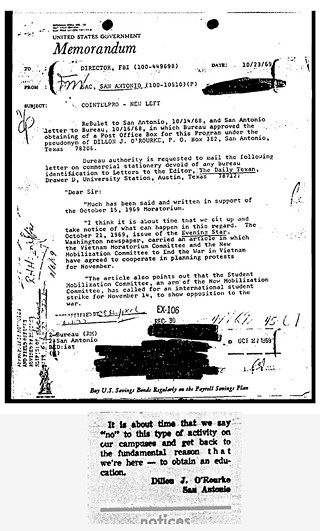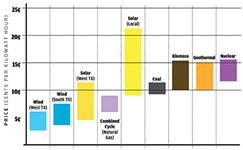The Facts Were Immaterial
The 'counterintelligence' operations of Hoover's FBI included harassment, vilification, violence – and fake 'underground' newspapers in Bloomington, D.C., and Austin
By Dale Brumfield, Fri., June 7, 2013
"Only a sustained, informed, courageous, and humane struggle can build a living community within the shell of the dying one." – Letter from the Citizens' Commission to Investigate the FBI, March 17, 1972
Since one purpose of most underground newspapers in the late 1960s was to disrupt and provoke, this almost benign announcement would have raised few eyebrows:
"San Antonio [field office] feels that from time to time steps can be taken to cause disruption within the ranks of the new left to expose them for what they are," reads the redacted Jan. 17, 1969, memo from the FBI San Antonio field office to Bureau Director J. Edgar Hoover. "One technique the San Antonio division would like to propose is that a publication be launched which would consist of a 1-page throwaway document which could be printed or mimeographed to expose or point out the identities of New Left individuals who are causing disruption ..."
That provocative "1-page throwaway" was intended to become The Longhorn Tale, a phony underground newspaper to be produced by the FBI, with the purpose of neutralizing anti-war and anti-draft sentiment on the campus of the University of Texas at Austin at the height of Sixties campus unrest. It wasn't the first such effort: The FBI had also produced four editions of a fake campus newspaper at Indiana University Bloomington in September and October of 1968, called Armageddon News, and then in December of 1969 produced and distributed a third and final fake newspaper – called the Rational Observer – at Washington D.C.'s American University.
Barely noticed at the time and long unseen, the three papers were recently discovered in a cache of declassified FBI documents. "[They are] one of the 'smoking guns' that activists who produced the underground press in the Sixties and Seventies could little have imagined: right-wing campus papers produced by the FBI," said James Danky, instructor at the School of Journalism and Mass Communication at the University of Wisconsin, and author of Undergrounds, a librarian's catalog of alternative press publications. "These papers' faltering efforts ... speak to the cultural and political distance between the forces of repression led by J. Edgar Hoover and the seismic changes in America's social fabric."
"The idea that the FBI was producing such publications would have seemed far-fetched," Danky continued. "The FBI seemed too clumsy to pull it off." And judging from the agency's short-lived and frankly laughable products, indeed it was.
In May of 1968, as the New Left and anti-war movements intensified across the United States, Hoover implemented a secret FBI "counterintelligence" program called COINTELPRO, an insidious and constitutionally unlawful campaign across American college campuses to harass activists, and disrupt and infiltrate the college organizations, newspapers, and underground papers that the Bureau considered subversive – and especially those that had criticized Hoover or the FBI. "Our nation is undergoing an era of disruption and violence caused by various individuals generally connected with the New Left," reads a memo dated May 9, 1968, written to Domestic Intelligence Director William C. Sullivan by his deputy Charles D. Brennan, proposing the COINTELPRO program. "The New Left has on many occasions viciously and scurrilously attacked the Director and the Bureau in an attempt to hamper our investigation of it and to drive us off the college campuses.
"The purpose of this program is to expose, disrupt and otherwise neutralize the activities of this group and persons connected with it. It is hoped that with this new program their violent and illegal activities may be reduced if not curtailed."
The conspiracy-obsessed and megalomaniacal J. Edgar Hoover originated (on his own, with no higher authority) the first incarnation of COINTELPRO in 1956, to "infiltrate, penetrate, disorganize and disrupt" the U.S. Communist Party after the Rosenberg trial and following the fall of McCarthyism. Bureau officials believed that existing laws were insufficient to control the activities of certain dissident groups, and were hampered by recent Supreme Court decisions in the early Sixties limiting the Justice Department's ability to prosecute American Communists. Accordingly, Hoover redirected COINTELPRO's operations toward the use of antagonistic strategies to "contain and disrupt" radical activists he perceived as threats to the American way of life. These activist organizations included the Socialist Workers Party (1961-69), white hate groups (1964-71), the Puerto Rican independence movement, and Black Nationalist groups (1967-71). The New Left found itself in Hoover's crosshairs in 1968 following the Columbia University student uprising, and, with protests against the Vietnam War increasing in intensity, Hoover initiated what would become the final phases of "COINTELPRO – Disruption of the New Left."
"The New Left movement is a loosely-bound, free-wheeling, college-oriented movement spearheaded by the Students for a Democratic Society and includes the more extreme and militant anti-Vietnam war and anti-draft protest organizations," reads an FBI memo of Oct. 28, 1968, which also cites the Southern Student Organizing Committee (SSOC), the Young Socialist Alliance (YSA), and the Student Nonviolent Coordinating Committee (SNCC), among others.
From Harassment to Violence
The highly centralized Bureau micromanaged COINTELPRO from its Washington headquarters through 59 field offices across the United States. Each field office's "Special Agent in Charge" (SAC) was expected to compile a description of all existing targets and key activists, then submit recommendations for effective counterintelligence activity to Hoover, who either authorized or rejected them. Nothing was done without prior Bureau approval, and SACs were required to provide quarterly progress reports.
According to the findings of the 1974 Church Committee investigating Bureau intelligence activities, COINTELPRO-New Left used about 14 types of harassment methods, from the simply annoying to the vicious and potentially deadly. The Bureau's attacks included anonymous letters, letters sent by fictitious authors ("Dillon J. O'Rourke" was the favorite of the San Antonio field office), planted evidence, informants, fake phone calls, and active target harassment. The Church Committee found that among other tactics, agency operatives got people fired by anonymously attacking their political beliefs; they also sent anonymous letters to spouses of intelligence targets in efforts to destroy their marriages. They monitored campus newspapers for political meetings and appearances by leftist speakers, and organized protests to stop or disrupt the events. They targeted radical leaders for police harassment and IRS audits. Frequently working with cooperative informants within city governments, they sometimes convinced local landlords to cancel leases or disconnect utilities at the homes of targeted activists. The FBI eventually acknowledged in 1976 conducting 2,218 separate COINTELPRO operations between 1956 and 1974, undertaken in conjunction with 2,305 warrantless telephone taps, 697 buggings, and the opening of 57,846 pieces of mail.
In one extreme case, Hoover – obsessed with the rise of the Black Panther Party – wrote in a memo to the Chicago SAC that the "purpose of counterintelligence action is to disrupt the Black Panther Party, and it is immaterial whether facts exist to substantiate the charge." Amplified by anonymous Bureau mailings and racist cartoons attributed to the Panthers, conflicts with the Chicago police escalated until officers raided Black Panther Party leader Fred Hampton's apartment on December 4, 1969, and in a hail of gunfire killed him and fellow Panther Mark Clark.

Sometimes slander alone was sufficient to Hoover's purposes. In 1970, actress Jean Seberg went into premature labor after COINTELPRO-Black Extremist Groups leaked to the Los Angeles Times that she was pregnant by a Black Panther Party member, not her husband Romain Gary. The premature baby died two days later, and a distraught Seberg held an open-casket funeral so people could see the little girl was white.
Search and Destroy
"I joined SDS [Students for a Democratic Society] in spring of 1964," former UT student Alice Embree recalled recently. "I was involved in civil rights activity – the integration of dorms, sports, etc. I got involved with anti-war work as well as student rights."
In the fall of 1966, UT students Embree, Robert Pardun, and Thorne Dreyer organized a weekly, collectively-run, underground newspaper called The Rag. ("Underground" was an honorific term applied to free or cheap news-and-arts weeklies that sprung up across the country, often in college towns.) Like most such papers, it was staffed by advocacy journalists and SDS members who considered the mainstream press a failure in addressing the "new community" developing in Austin and the United States, pointing out the media's unwillingness to provide space for controversial ideas or present anti-establishment points of view on social issues, and especially in opposition to the Vietnam War. (In 2006, Dreyer and others revived the publication online, as "The Rag Blog" at www.theragblog.blogspot.com.)
Controversial events generating strong student engagement at UT in 1966-67 included a proposed 100% tuition hike, protests against the draft, and against Secretary of State Dean Rusk, who spoke at the Capitol in January 1967. The Bureau was watching: A memo said the FBI had acquired an SDS-produced "Wanted" poster of Rusk, which "set forth an artist's portrayal of Rusk and scurrilous statements, such as 'scum of the earth,' 'boob,' 'idjit,' and 'eternal sap.'"
In April of 1967, black activist and SNCC Chairman Stokely Carmichael appeared during "Flipped-Out Week," an unofficial student event that dismayed the UT administration and that the FBI monitored closely. A few weeks later, the SDS sponsored an anti-war rally in defiance of a university ban on such activities. "I was one of six put on disciplinary probation in spring 1967 for giving an anti-war speech in an 'unauthorized location,'" said Embree. "It was a huge free speech fight." In the aftermath, SDS lost its campus-approved status.
In the spring of 1968, the FBI officially became concerned about New Left activities in the Austin area, especially those of the SDS, whose chapter at UT-Austin was in its fourth year. The FBI San Antonio/Austin field office first suggested to D.C. headquarters that, using "established sources or anonymous mailing," agents spread the rumor that an SDS leader was a "narcotics agent." Skittish only of potentially illegal activities that could implicate or embarrass the Bureau for failing to take enforcement action, Hoover rejected that idea, stating in a May 11 memo, "Your suggestion is not approved, as such an allegation ... would indicate a violation of federal law under the FBI's jurisdiction."
A July 5 memo reflects particular interest in other UT groups, such as the University Committee to End the War in Vietnam, Afro-Americans for Black Liberation, and the W.E.B. Du Bois Club. This memo also contains redacted personal data from the leaders of these groups obtained from FBI sympathizers via university records, including height, weight, build, hair color, even parents' names and addresses. An Aug. 12 memo suggests using actual articles from the local press to show the depravity of New Left leaders and members. "Letters and articles showing advocation of the use of narcotics and free sex are ideal to send to University officials, wealthy donors, members of the Legislature, and parents of the students who are active in New Left matters." The memo added that letters should be written not directly from the agency, but pseudonymously, "in the vein of an irate parent" or "an angry taxpayer."

Apparently, this indirect campaign received Hoover's approval, and a Bureau-sponsored campaign of harassment and slander was soon underway. The San Antonio SAC rented a post office box under the name Dillon J. O'Rourke, PO Box 382, San Antonio, 78206, for the sole purpose of mailings to UT's The Daily Texan. O'Rourke became possibly the most prolific letter writer in Austin, with the name appearing on numerous letters to the editor in the campus paper until 1970, with the admonition from Hoover that "all necessary steps are taken to prevent the Bureau from being identified as the source of these notes."
Anonymous letters were also sent to parents of students employed at a Killeen coffeehouse called the Oleo Strut; agents informed the parents that their children were engaging in anti-war indoctrination of soldiers stationed at nearby Fort Hood. The letters – ostensibly written by "concerned citizens" – informed them their children were "living in a commune and attending pot parties."
An example of the lengths the field offices would go to vilify and destroy a target is evident in a memo dated Oct. 15, 1968, from the SAC San Antonio, reporting that a local schoolteacher had been a member of SDS while a student at Cornell University. SAC reviewed "credit and criminal records and selective service records" to verify the information. "If [redacted] was a member of the SDS this would be an excellent opportunity to discredit him with the South San Antonio school district." Bureau headquarters was almost giddy in its approval. "An investigation of [redacted] should be aggressively pursued to pursue his current status in regard to SDS."
The Bureau learned that the teacher in question had never been a member of the SDS, but had instead either turned in or destroyed his draft card while in Ithaca, N.Y. Undaunted, the FBI still mailed the revelation to the South San Antonio school system in January 1969. "I feel that we do not need this type of person in any school system," the letter said, signed by a "concerned citizen who believes in true academic freedom." An April 1970 follow-up memo verifies that teacher was fired and subsequently moved out of the state.
'The Longhorn Tale'
A conference of the Texas and Oklahoma chapters of SDS was held at UT in late October 1968. On Jan. 17, 1969, an FBI memo proposed the time was right to create The Longhorn Tale, a fake underground newspaper, to help counter the movement. The memo included two sketches of possible mastheads for the counterfeit publication, with an indirectly starring role for UT mascot Bevo. "At this time," the memo concludes in typically bizarre, stilted language, "San Antonio proposes that this document be entitled 'The Longhorn Tale.' It is to be noted that the mascot for UT is a Texas Longhorn steer. San Antonio feels that this title is a play upon words and feels that it possibly could be effective under this program."
The Bureau liked the "play upon words," replying Jan. 31 that the idea "has merit" and "warrants further consideration." "It is felt that these leaflets should be written in the vein of a moderate who opposes the war and the draft, but one who does not accept the use of these issues by subversives, such as found within the Students for a Democratic Society, the Communist Party, and the Young Socialist Alliance, for their own purposes."
"With regard to the masthead," the memo concluded stiffly, "it would appear that the title 'The Longhorn Tale' would be appropriate." Headquarters had decided to get directly involved; the memo also said the Exhibits section at the Bureau would prepare a final masthead and forward it to the San Antonio SAC.
Bureau officials presumed The Longhorn Tale would enjoy the same level of perceived success that another fake called Armageddon News enjoyed at Indiana University the previous September. Armageddon News was the third of a four-phase approach to "neutralization and deterrent of the New Left" in Bloomington, according to a memo from the Indianapolis SAC with the date redacted. In the agents' version of Bloomington political history, part one neutralized the campus chapter of the Communist Party, which had formed on Jan. 23; part two neutralized both the SDS and the Committee to End the War; and part four addressed the narcotics problem at a "hippie" area known as "the strip." "It is believed that distribution [of AN] would serve as a deterrent effect on innocent students who might unwittingly join these organizations without sufficient knowledge ..."
Although the Indianapolis SAC requested 25,000 copies, the director approved a print run of only 200 copies of two editions of AN, Sept. 9 and 16 of 1968, to be mailed anonymously to student leaders, fraternities, and sororities.
"We feel the majority at IU abhor the devious and disgusting actions last year of the New Left Hippie Breed," reads the lead story of Vol. 1, No. 1. "We have spent considerable time and effort to get the straight 'dope' on these pseudostudents, and we intend to keep you well informed." At the bottom of each issue, a tagline read: "Don't Let the New Left Win the Armageddon at IU."
By November 1969, the Armageddon News ceased publication, and in a Dec. 17 recap an SAC memo boasted that the first issue was reprinted in a local daily newspapers in Bloomington, adding also that "5,000 copies were reprinted and distributed by conservative organizations at IU."
By Feb. 1, 1969, the San Antonio field office was alarmed to see that an SDS national council meeting would be held either in Austin, San Antonio, or Houston, and it began scrambling to look for ways to keep the meeting off campuses and even out of Texas. "Louisville, Detroit, and Denver will immediately contact logical sources at their respective universities to secure any derogatory information which could be utilized to block SDS from having their meeting at the University of Texas," reads a Feb. 5, 1969, memo.
Salvation came from UT President Norman Hackerman and the Board of Regents, who decided they would not make university facilities available for the SDS conference, effectively blocking the student group's plans. The ACLU took UT's refusal to a court as a First Amendment violation but was rebuffed. Dillon J. O'Rourke again chimed in with a letter to The Daily Texan, stating that UT should "take the next logical step to expel SDS from the campus entirely."
As the SDS fractured nationally – partly with the assistance of FBI disruption – and activism died down at UT in the spring of 1970, the long-delayed Longhorn Tale project came to an end as well. An April 4, 1970, memo from Bureau headquarters read, "It does not appear that the current efforts of the New Left to disrupt normal campus activities at the University of Texas would warrant the distribution of such a publication at this time." The Bureau believed by then that only a small percentage of UT students held anti-war sentiments, and that "no appreciable benefit would accrue" from publication. All that existed of the paper was its bovine masthead.
COINTELPRO waded into the fake underground publishing business one last time with the publication of the Rational Observer on the campus of Washington D.C.'s American University. "This paper can be utilized to expose the evils of the New Left and to act as an anti-New Left outlet for the silent majority," states a Dec. 4, 1969, memo from the Washington Field Office.
On March 8, 1971, a private group called the Citizens' Commission to Investigate the FBI raided the Bureau field office in Media, Pa., liberated more than 1,000 memorandums and detailed descriptions of COINTELPRO's wiretapping and infiltration activities, and sent them to newspapers nationwide. In a terse April 28 note, an apparently stunned Hoover abruptly canceled all COINTELPRO-related operations, including those aimed at the New Left, espionage programs, white hate groups, the Communist Party, and black extremists. The program's problems were just beginning – once exposed, and as a result of the Church Committee report, the Bureau was sued numerous times for its harassment of activists and infringements on freedom of speech. In 1984, a lawsuit known as Hobson v. Wilson concluded with an award of more than $7 million in damages to six former members of the New Left movement because of COINTELPRO's activities.
And in a tribute to the privacy COINTELPRO routinely ignored – and perhaps as well to the investigative incompetence of the FBI – the identities of the Citizens' Commission to Investigate the FBI were never discovered. Their liberation of the classified FBI files was their only known action.
Dale Brumfield is a writer living in Doswell, Va. His book Richmond Independent Press: A History of the Underground Zine Scene is scheduled for an August 2013 publication.
Got something to say on the subject? Send a letter to the editor.











